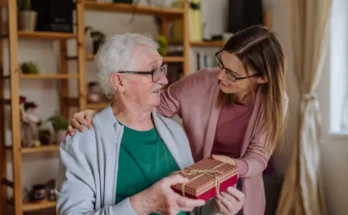Giving is one of humanity’s oldest instincts. Long before wrapping paper, bows, and shopping carts, we were giving—fruits to show gratitude, handmade tools to strengthen bonds, and simple tokens to express affection. A gift, in its purest form, isn’t about obligation or luxury. It’s about the soul’s whisper that says, “I see you. I know you. I care.”
There is something undeniably magical about gifts. They transcend currency and time, becoming vessels of meaning. A stone picked from a shared beach. A handwritten letter during a storm. Even a smile wrapped in silence can be a gift. To give is to acknowledge someone else’s presence in your world—and to choose, with intention, to make it brighter.
More Than Things:
Every gift tells a story. A carefully chosen book says, “I know what inspires you.” A custom painting says, “I see who you are beyond the surface.” Even the smallest tokens become metaphors when given with sincerity. In many cultures, certain gifts hold deep symbolic weight. A red envelope in Chinese traditions carries wishes of prosperity. A garland in Indian rituals conveys honor and reverence. A carved mask in African ceremonies tells stories of ancestors and spirits. Gifts, in this way, become a kind of spiritual language, transcending the physical object and becoming part of the recipient’s story.
We live in an age of gift registries, online wish lists, and mass-produced options that scream “perfect present!” But do price tags define the value of a gift? Not at all. A mug with a favorite quote, a mixtape made with love, or a photo album stitched together with memories often outshine the shiniest gadgets. The most cherished gifts are rarely the most expensive—they’re the most personal. They carry fingerprints, stories, and emotions. They are given not just with money, but with time, thought, and love.
The Psychology of Giving and Receiving:
When we give, we don’t just make others happy—we feel joy ourselves. Neuroscience supports this: giving activates areas in the brain linked to pleasure, trust, and social connection. It’s often more satisfying to give a meaningful gift than to receive one. Giving allows us to step out of ourselves and into someone else’s world. It’s an act of empathy. Whether it’s a surprise birthday gift or an unexpected note, giving reminds us that we’re part of something bigger—that human connection is, itself, a gift.
Receiving is just as important—and sometimes more difficult—than giving. It requires vulnerability. To receive a gift is to be seen, appreciated, and loved. And yet, many people find it awkward or uncomfortable. But true gratitude makes receiving beautiful. It’s not about feeling indebted, but about accepting kindness with openness. A heartfelt “thank you” can transform a gift into a moment of connection that lingers long after the ribbon is untied.
The Evolving Face of Gifts:
-
From Physical to Experiential
In today’s fast-paced world, a shift is taking place. More people are choosing experiences over things—concert tickets instead of electronics, a cooking class over a watch, a weekend getaway instead of another sweater. Why? Because experiences create memories, not clutter.
Giving someone a moment—a laugh, an adventure, a quiet sunset—can be more powerful than any item wrapped in paper. As we evolve, so too does the way we give. The best gifts now often come without a bow, but with a story waiting to unfold.
-
Digital Gifting in the Modern Age
With technology, even gifts have gone digital. Gift cards, e-books, NFTs, and online courses are now as common as flowers and chocolates. While some lament the loss of tactile charm, digital gifts offer convenience and personalization at scale.
But the challenge remains the same: meaning. Whether you’re sending a Spotify playlist or a digital portrait, the goal isn’t the format—it’s the feeling behind it. As long as intention is present, even a pixel can hold a world of love.
When Gifts Heal and Transform:
-
Acts of Giving in Times of Crisis
In moments of loss, illness, or despair, gifts can become powerful symbols of hope. A meal dropped off during grief. A handwritten letter during recovery. A soft blanket mailed across countries during a difficult winter. These are not just gestures—they’re lifelines.
Giving in times of crisis is about more than kindness. It’s about saying, “You are not alone.” In such moments, gifts become more than thoughtful—they become sacred.
-
The Gift of Presence
Sometimes, the most profound gift isn’t wrapped at all. It’s your time. Your listening. Your quiet companionship. Being present with someone, especially in their most vulnerable moments, is a gift more valuable than gold.
A hand to hold, an eye to meet, a moment shared—that’s the kind of gift that echoes far beyond a single occasion. It lingers in the heart. It reminds people they matter.
Gifts Across Cultures and Traditions:
Gift-giving takes many forms across the globe, each shaped by history, belief, and community. In Japan, gift-giving is an art form. The presentation, the wrapping, the timing—all are as important as the gift itself. It’s not about extravagance but about respect and gratitude. In Middle Eastern cultures, hospitality is a gift in itself. Guests are treated with lavish offerings—dates, tea, spices—not out of obligation, but as a sacred tradition. In parts of Africa, communal gifting is central to ceremonies, where the act of giving and receiving strengthens community bonds.
These traditions remind us that gifts are not just objects—they are cultural expressions, social contracts, and acts of heritage. Certain times of the year are practically built on the joy of giving. Christmas, Eid, Diwali, Hanukkah—all share a common thread: the celebration of light, love, and generosity.
In these seasons, gifting goes beyond material. It becomes a way to celebrate relationships, offer blessings, and share in abundance. Even the preparation—the wrapping, the planning, the anticipation—is part of the joy. Festivals remind us that gifts are not about filling a stocking or ticking a list. They’re about presence, not presents.
Conclusion:
In a world buzzing with materialism and instant gratification, the true spirit of gift-giving remains timeless. At its heart, a gift is an echo of love. It says, “I thought of you when I didn’t have to.” It’s a thread that binds people across time, space, and circumstance.
We give not just on birthdays or holidays. We give in moments big and small. A shared laugh. A knowing glance. A gentle gesture. These are the gifts that build relationships and strengthen the invisible cords of humanity.
Because the greatest gifts aren’t things at all—they’re the feelings they carry. Love. Gratitude. Connection. Memory.
So, the next time you offer a gift, no matter how simple, remember: you’re not just giving an object. You’re giving a piece of your heart.




